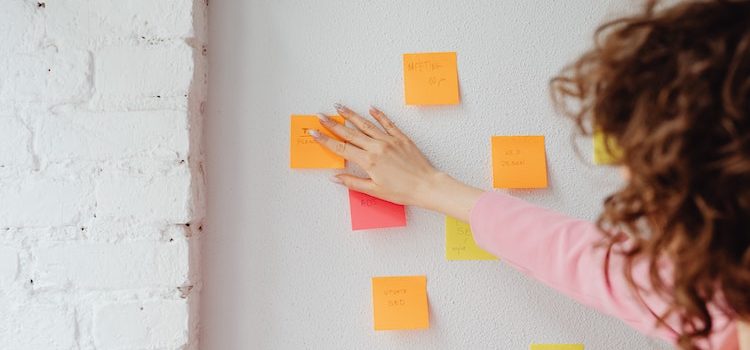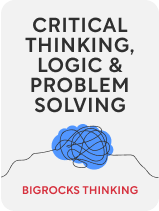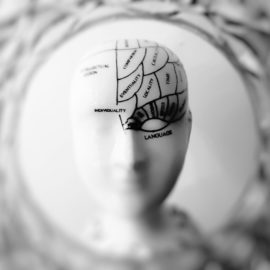

This article is an excerpt from the Shortform book guide to "Critical Thinking, Logic & Problem Solving" by Bigrocks Thinking. Shortform has the world's best summaries and analyses of books you should be reading.
Like this article? Sign up for a free trial here.
What’s the 5W2H framework for identifying a problem? How can a logic tree help you find a solution? What should you do after you solve a problem?
If you have a big question to answer or a decision to make, you have a problem to solve. Problem-solving is directed specifically at bridging a gap between your current state and a desired state—getting from here to there.
Continue reading to learn a step-by-step problem-solving process from the book Critical Thinking, Logic & Problem Solving.
Step-by-Step Problem-Solving
Let’s say that you know you currently have a job that you don’t enjoy. Your desired state is to have a job that you do enjoy. The gap—or problem—you need to solve is how to go from having a job you don’t enjoy to having one you do enjoy. You can use critical thinking to bridge that gap with step-by-step problem-solving. There are five steps in this process.
(Shortform note: Critical thinking is only one aspect of problem-solving. Another vital one is creative thinking, which allows you to produce new solutions that may not directly arise from the information you’re thinking critically about. Like critical thinking, creative thinking can be learned and honed, but it often requires different techniques. If you’re struggling to think creatively, rather than powering through, it may help to take a break from what you’re thinking about and clear your mind, sometimes even by distracting yourself with another task or topic until creativity strikes. It can also help to change up your environment and expose yourself to new stimuli—for example, by working outdoors or taking a walk.)
Step 1: Identify the Problem
The authors provide two frameworks for identifying the problem.
The 5W2H Framework
- What? What is your current state, your desired state, and the gap between them?
- Where? What is the location of your problem?
- When? When did or does the problem occur? Is it ongoing? Will it happen again in the future?
- Who? Which people are impacted by the problem? Who caused it? Who may know more about it?
- Why? Why did the problem occur or why does it continue to occur? Why is the problem important to address?
- How? How could you solve the problem? What process should you use?
- How much or how many? How big is the problem? How much harm is it causing? How long will it take to solve?
The SCQH Framework
- Situation: Identify your current situation and its context.
- Complications: What things are not working about the situation?
- Question: What questions do the situation and complication bring up?
- Hypothesis: Come up with some hypotheses that could address your questions.
Step 2: Form Solutions
Next, form solutions by first identifying potential solutions. You can use a tool such as a logic tree, which allows you to visually lay out potential solutions so you can easily consider them. First, write down your problem or question. Then, add branches that show the options and further branches that provide the details of those options, such as benefits or consequences. See the example below.
Step 3: Select a Solution
Once you’ve laid out your potential solutions and weighed them against each other, explain the authors, it’s time to select a solution.
One tool you can use to help you choose is a pros and cons assessment. To do this, you can list your pros and cons on a two-column chart and then rate each item based on how important it is. Once you’ve listed all your pros and cons and given them a weight rating, add up the sum for each column and then subtract the cons sum from the pros sum. If the result is a positive number, this suggests the overall benefit of the option outweighs the negatives, making it a good solution to consider.
(Shortform note: Other tools for weighing and selecting your solutions include a risk-reward assessment. As with the pros and cons assessment, you write out your potential solutions in a chart and then rate them based on how much reward they offer and how much risk they come with. Options that have a high-risk score like 4 out of 5 or a low reward score like 2 out of 5 may not be worth considering and can be quickly eliminated. Another tool is a consequences table, which is similar to the pros and cons assessment except that you simply describe the consequences—positive and negative—for each option rather than assigning them a numerical value.)
Step 4: Implement Your Solution
According to the authors, it’s now time to put your solution into action. You can use the 5W2H method again to help implement your plan:
- What solution are you going to implement?
- Why is this the best solution?
- Where will it be implemented?
- When does it need to be implemented?
- Who is going to implement it?
- How will it be implemented?
- How much effort or cost will it require?
(Shortform note: You can answer these questions in whatever order works best for you and your team. Some questions may have more than one correct answer, and if you’re working as a group, “Who is going to implement it?” can be answered by assigning roles and responsibilities to various team members. One person should be in charge of facilitating the meeting to go over the plan, but roles such as project managers or record keepers should also be designated for the implementation itself. Designating roles can help your team work more productively and efficiently, and it can also improve the group’s morale.)
Step 5: Evaluate the Results
Finally, the authors advise that you evaluate the results of implementing your solution. Note what went wrong and what went well, and use that information to make better decisions in the future.
(Shortform note: To evaluate your results, consider the actions and decisions that were made, why they were made, and what the results were. Assess their effectiveness, and then consider what other results could have occurred if different decisions were made. If those alternative results seem better than the results you got, consider changing up your strategy the next time you face a similar problem.)
Exercise: Solve a Problem
The authors explain how to solve a problem using their five-step process. Apply this to a problem in your own life and come up with a solution.
- First you need to identify the problem. What gap can you identify between your current situation and what you desire? Define this gap using the 5W2H questions.
- Next, begin forming solutions. Use a logic tree or other visual tool to lay out your options and their consequences and advantages.
- Choose one of the solutions you’ve come up with by assessing the pros and cons of each. Select the option that provides the most advantages and the fewest drawbacks.
- Now that you have your solution, create a plan to implement it. Use the 5W2H method again to form your plan.
- Finally, assess your process and outcomes and note things you did well and things you could improve. Record them somewhere so you can refer back to them next time.

———End of Preview———
Like what you just read? Read the rest of the world's best book summary and analysis of Bigrocks Thinking's "Critical Thinking, Logic & Problem Solving" at Shortform.
Here's what you'll find in our full Critical Thinking, Logic & Problem Solving summary:
- A step-by-step guide for improving critical thinking and problem-solving skills
- Tips for conducting better research and finding reliable resources
- How to improve your communication and storytelling skills






